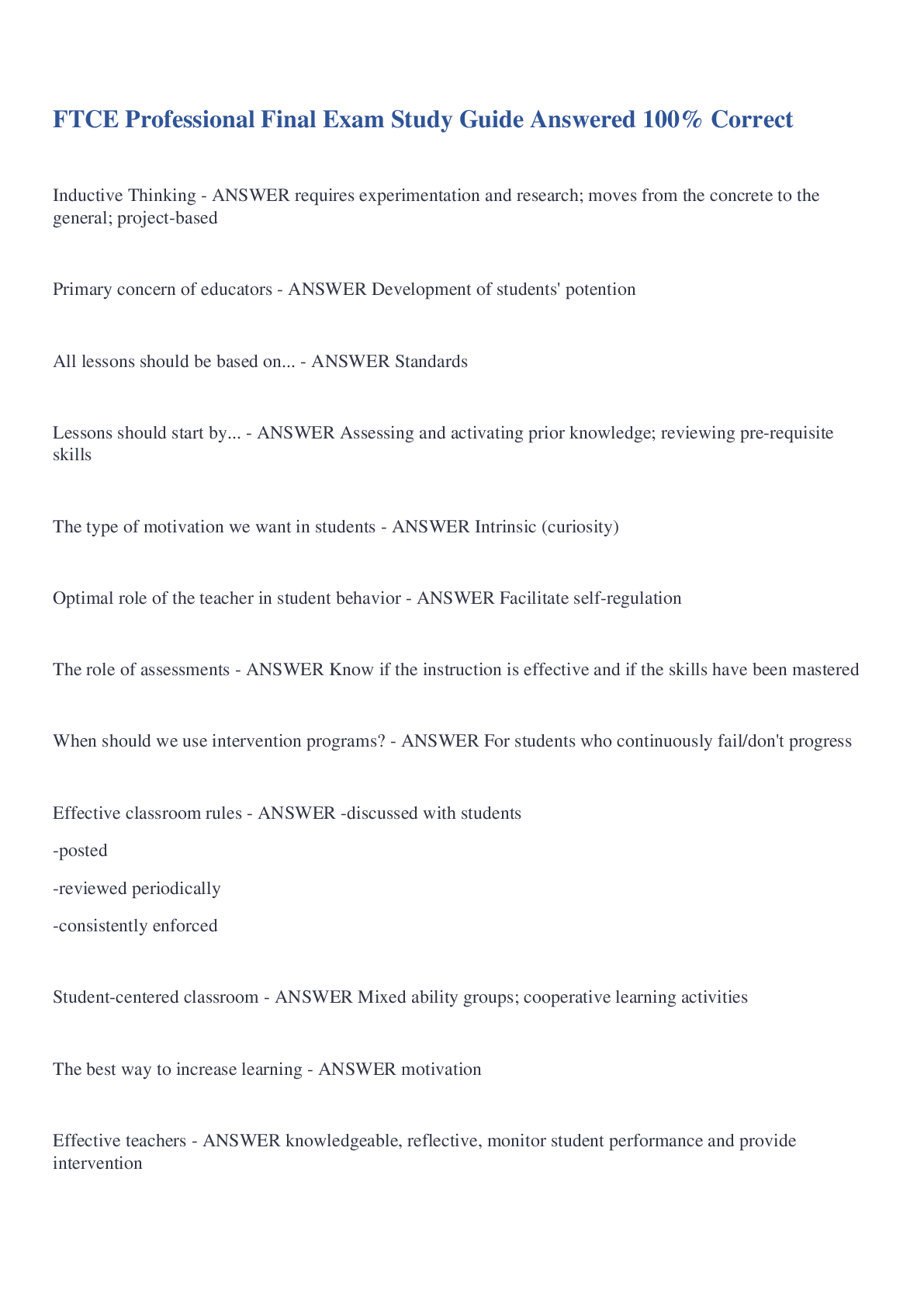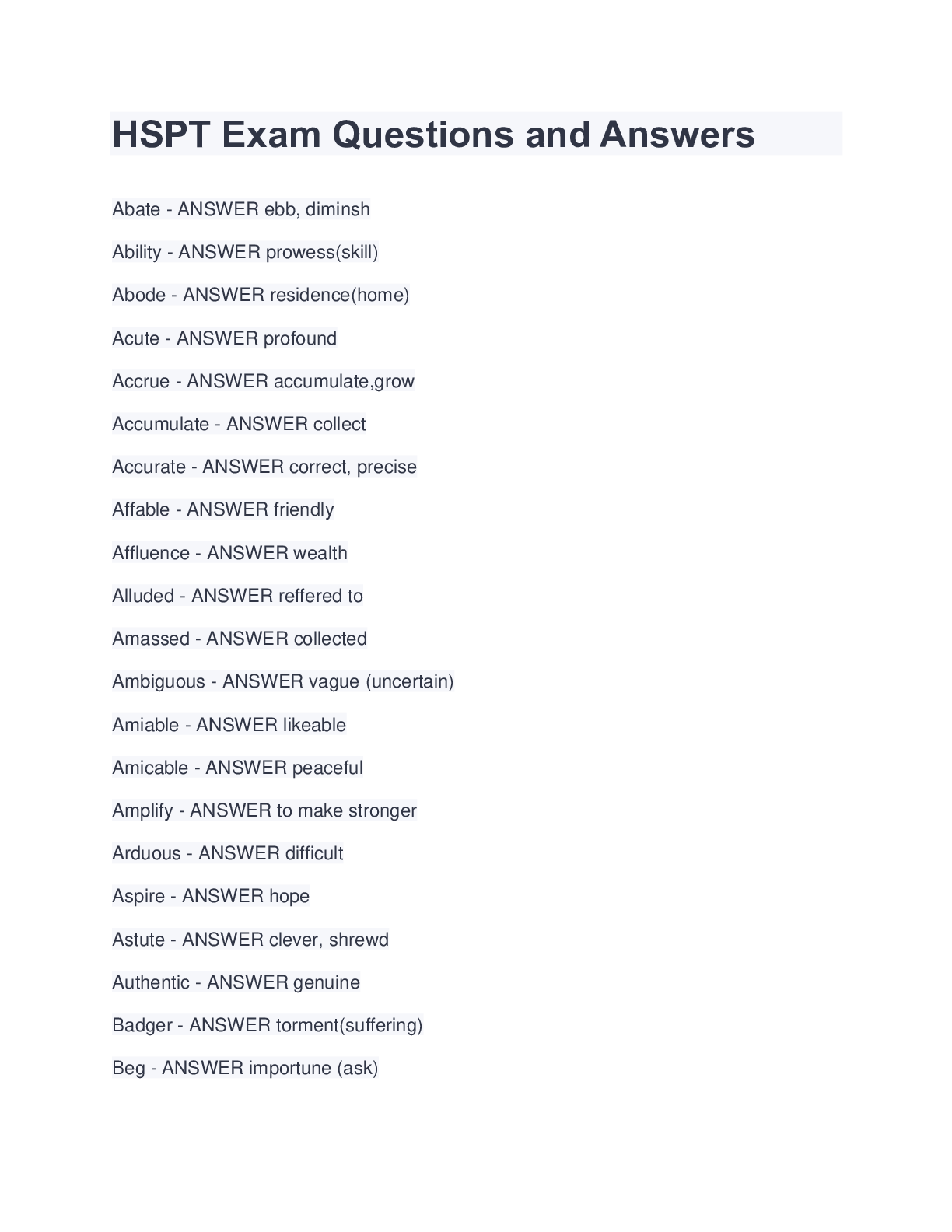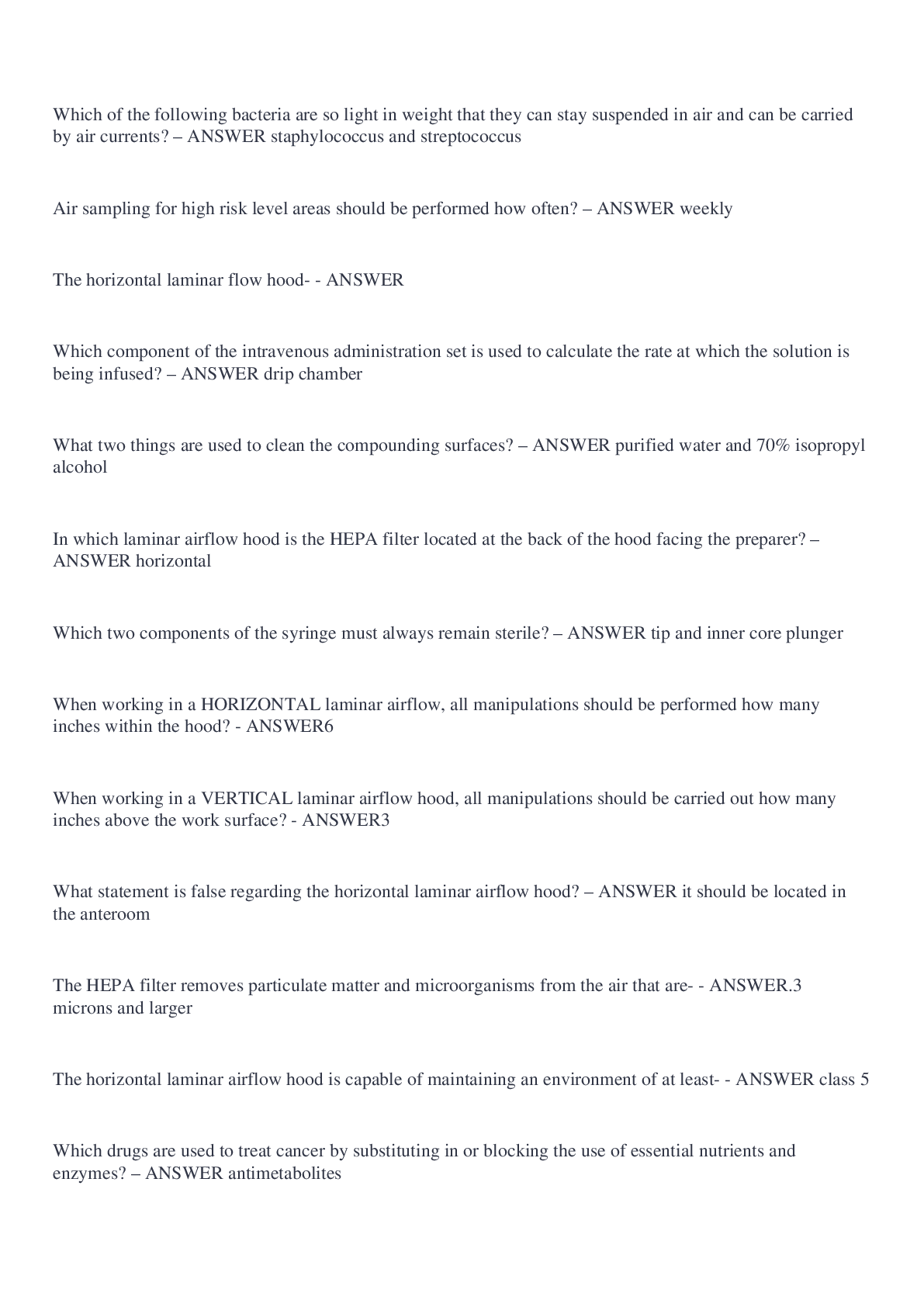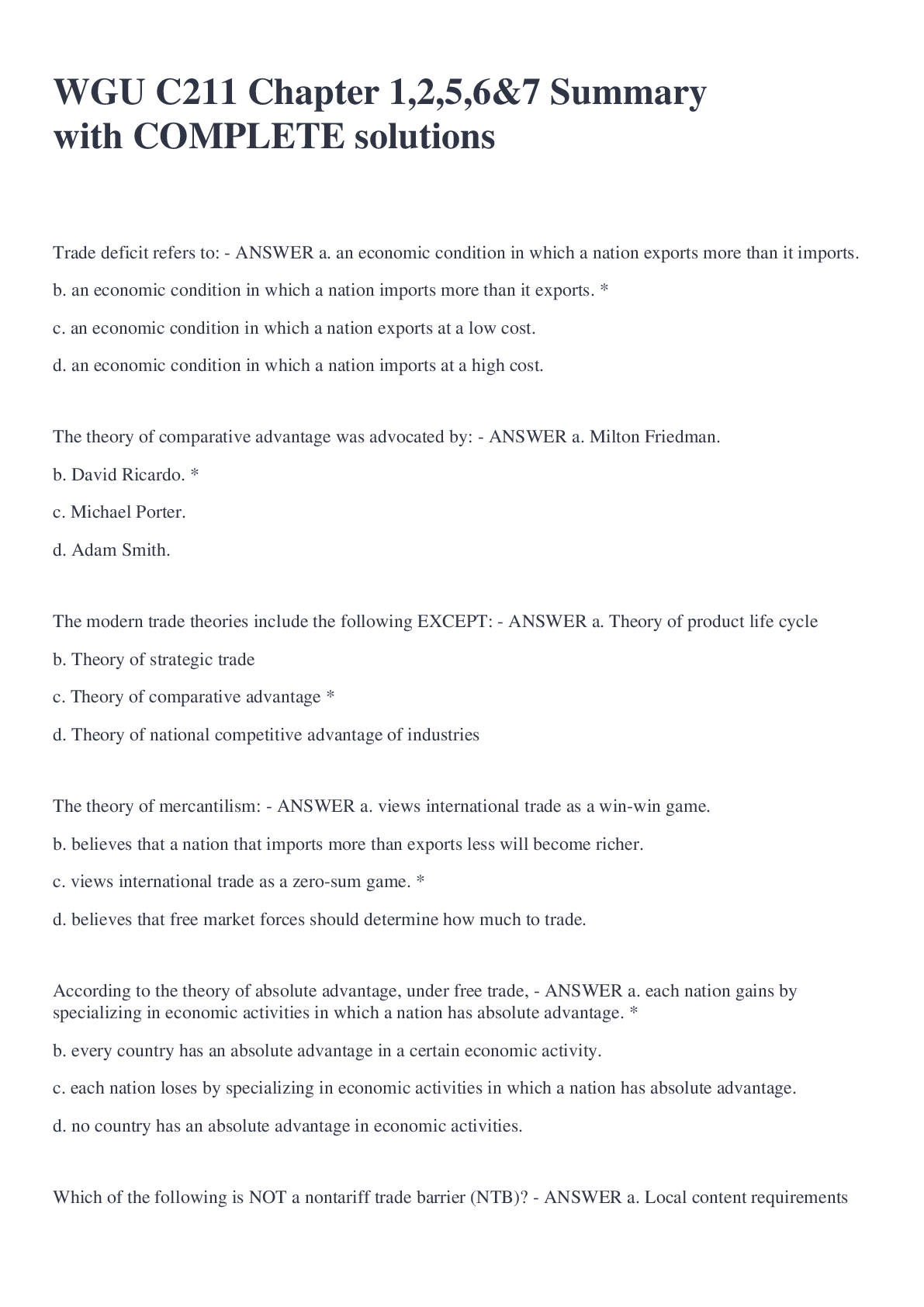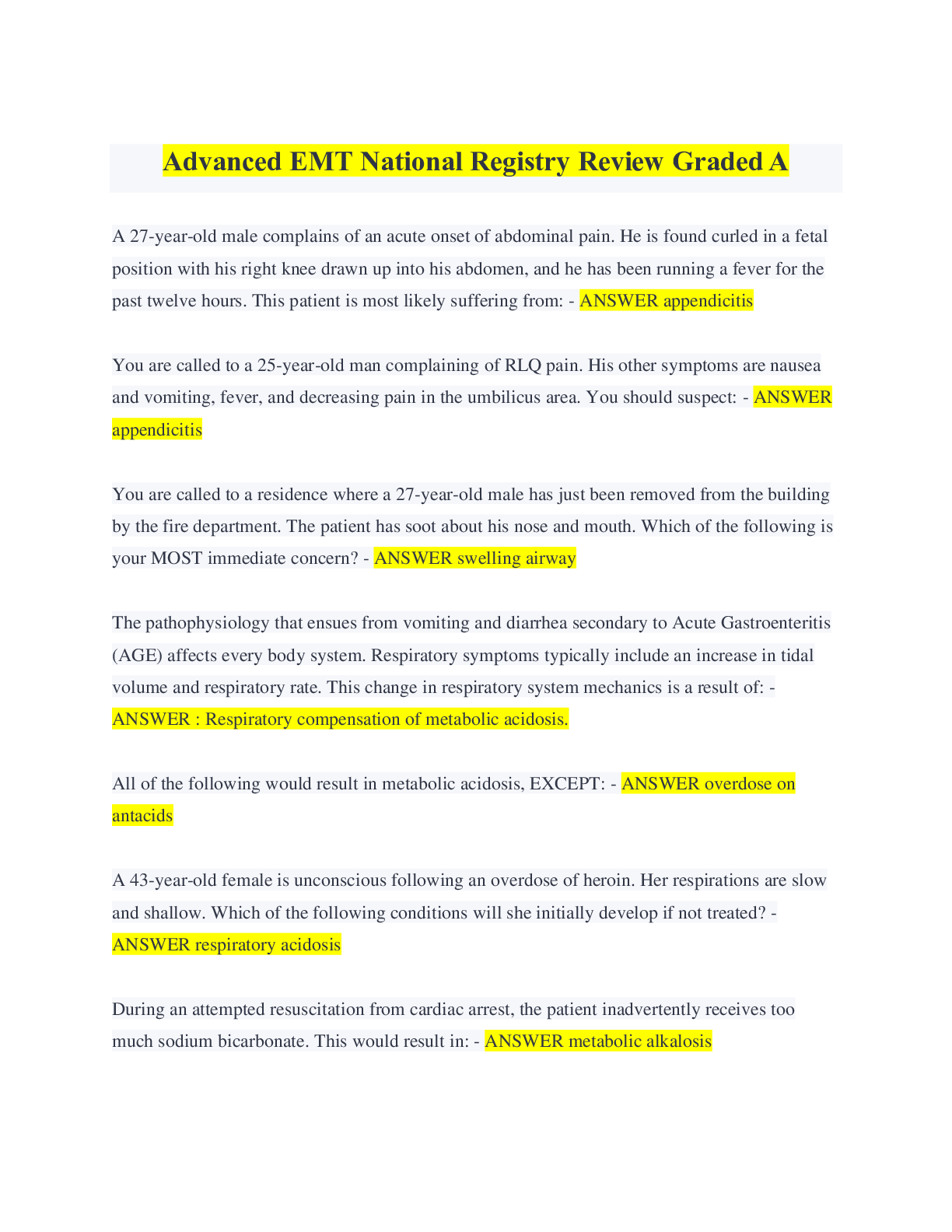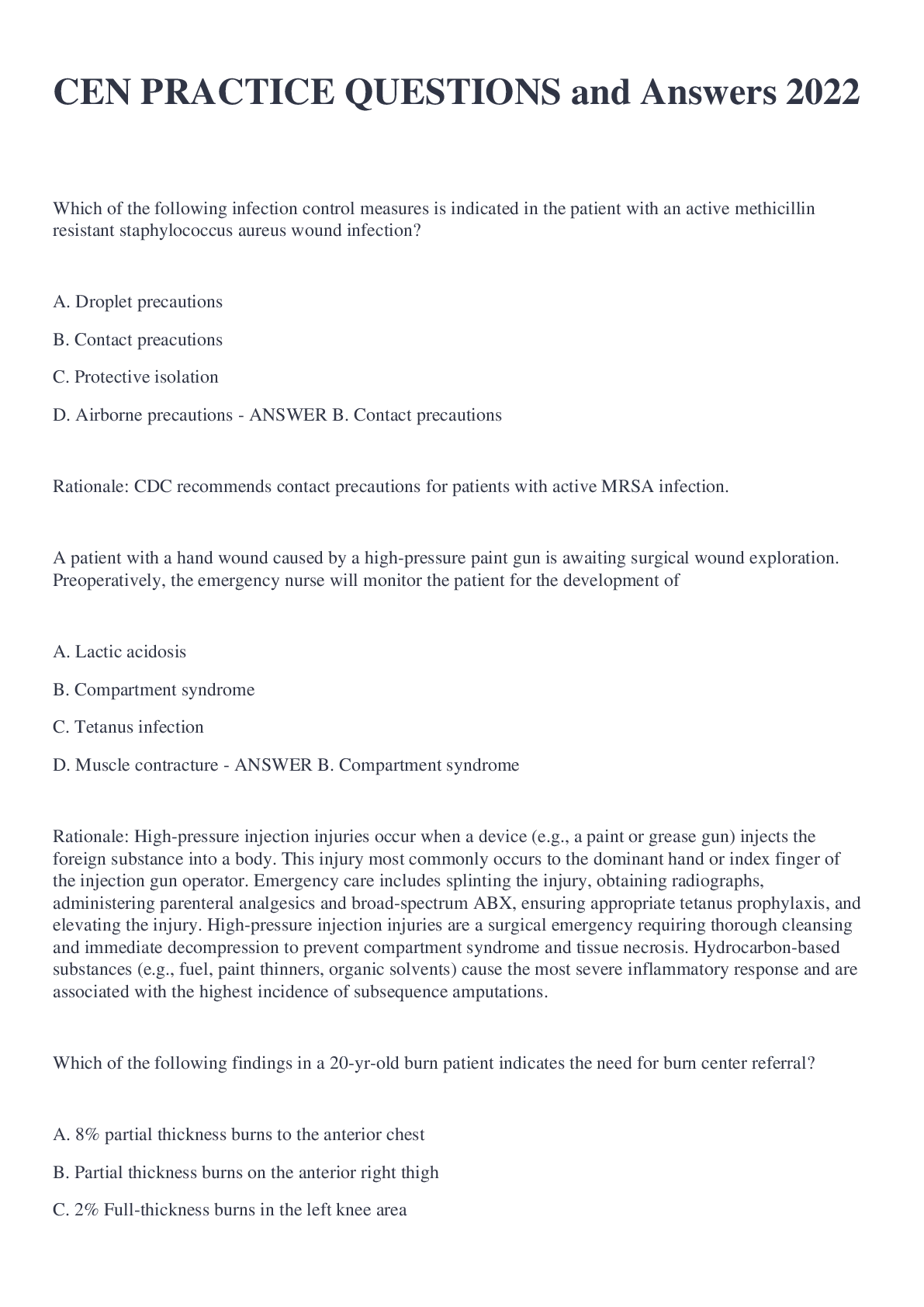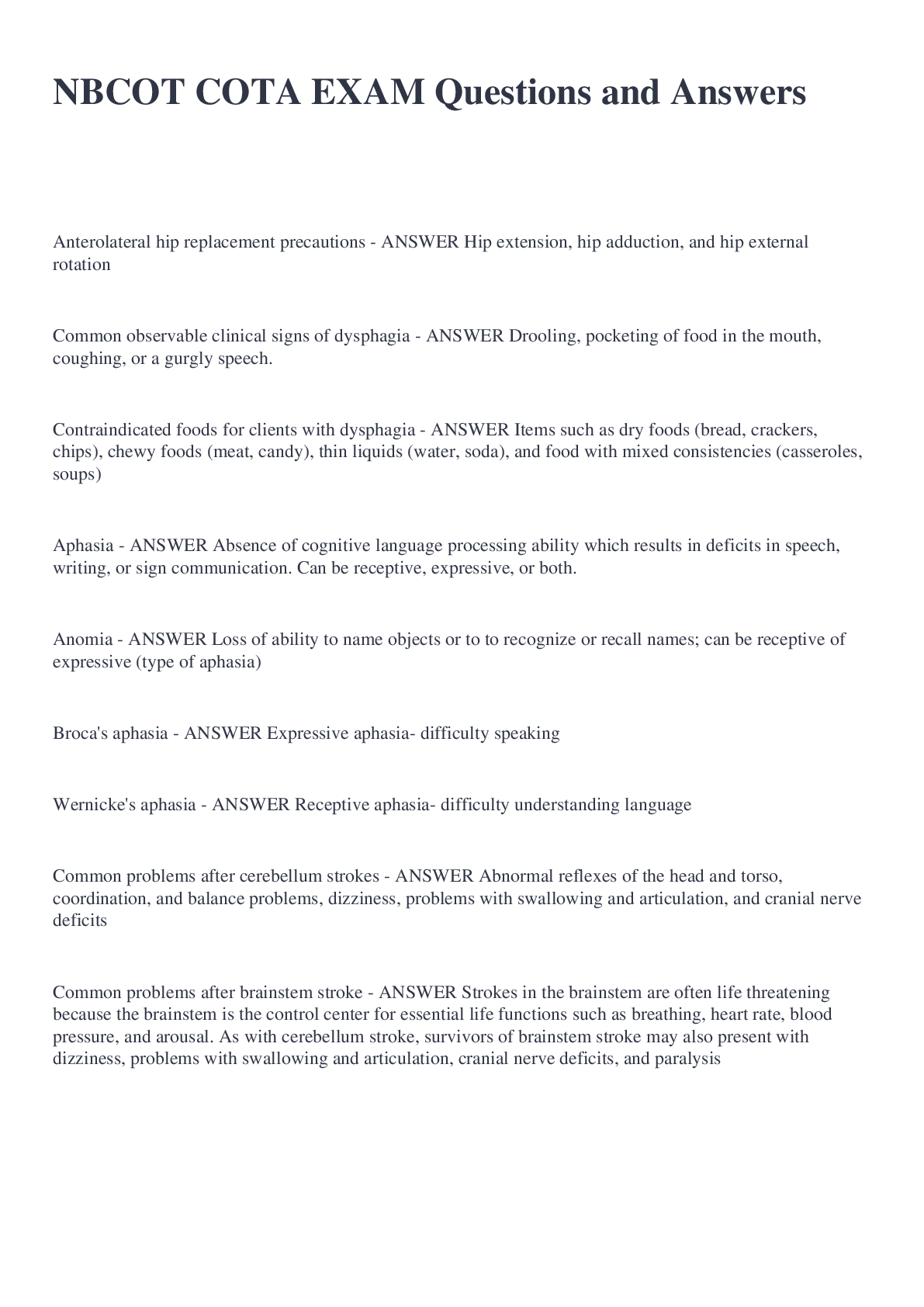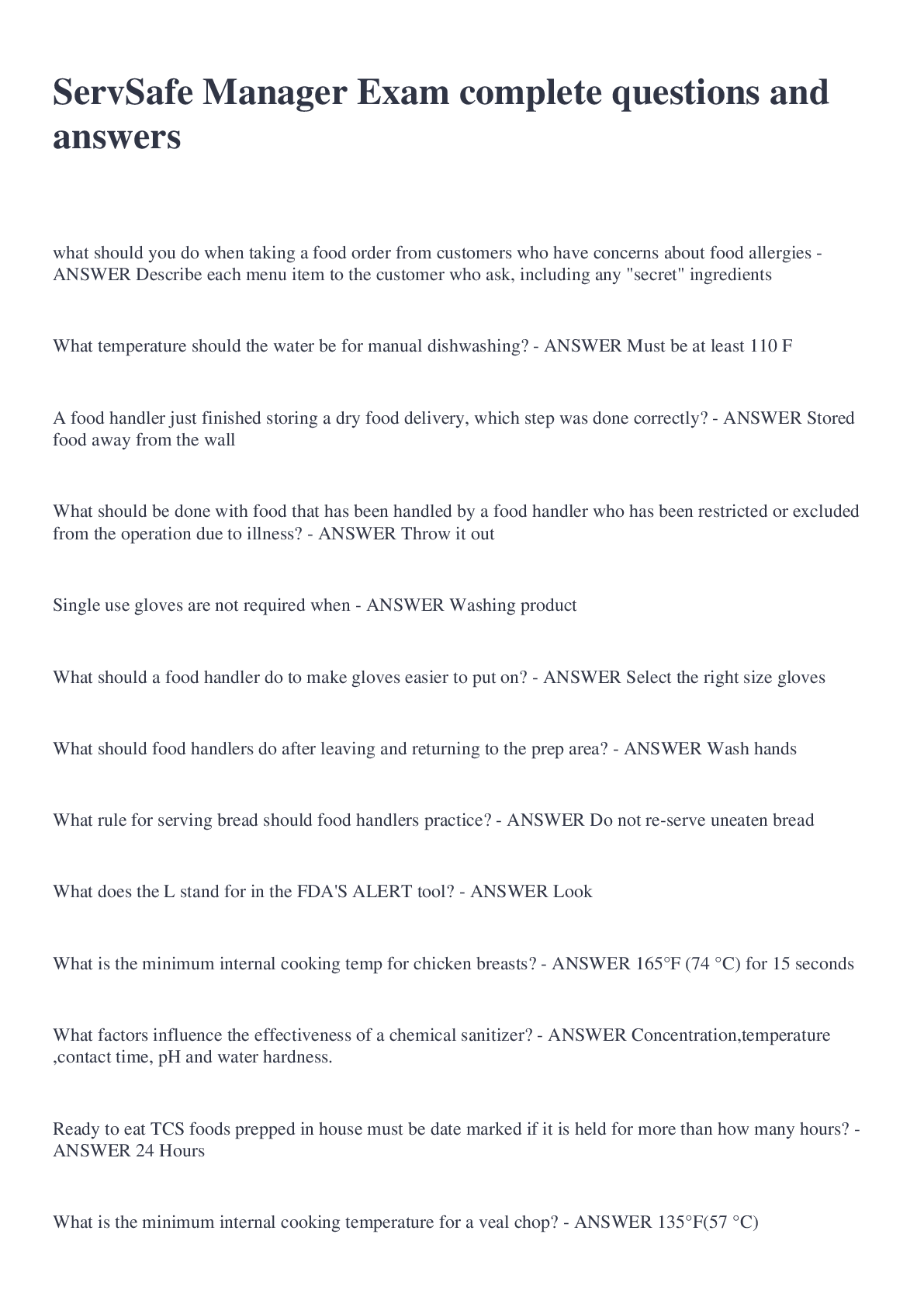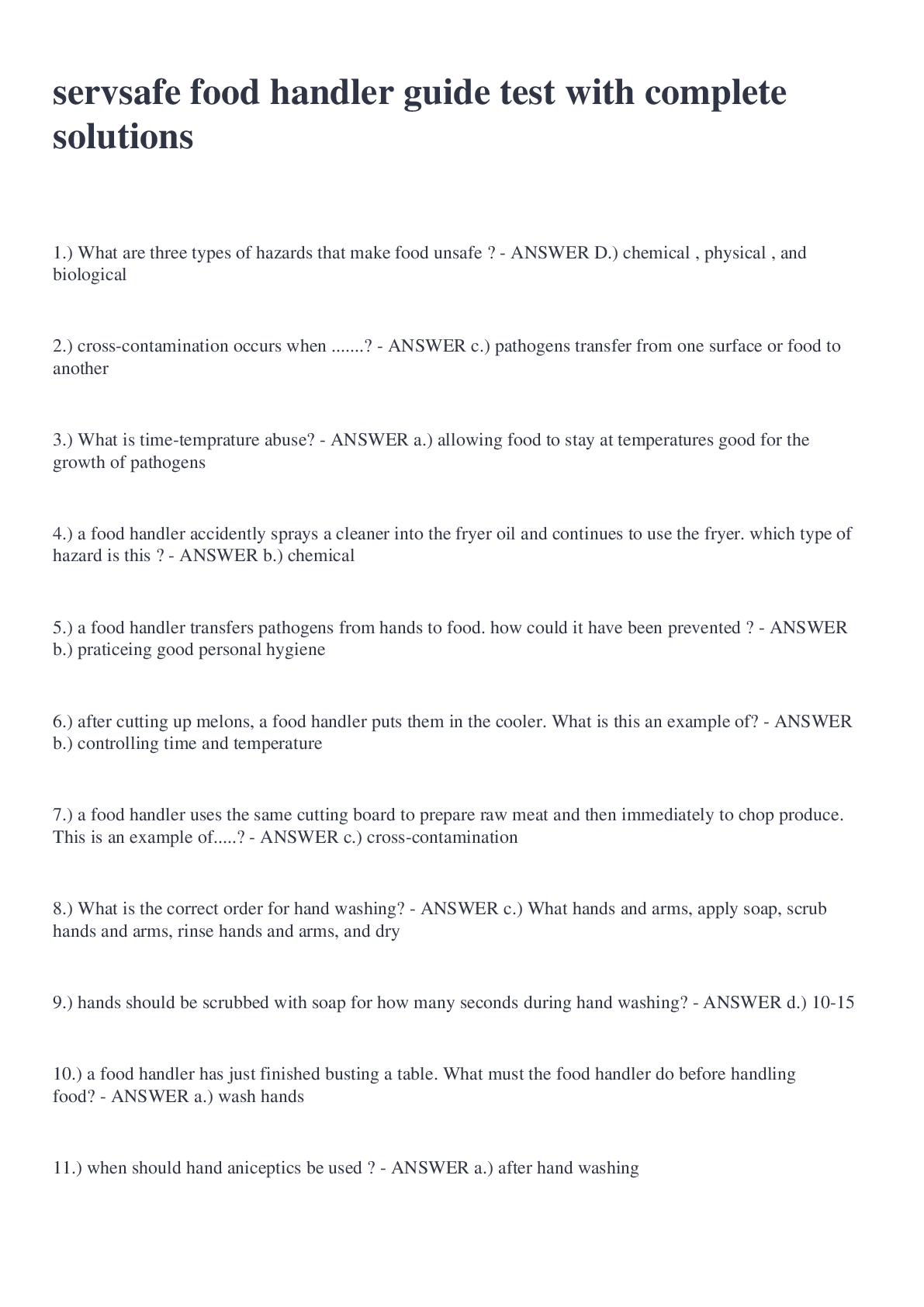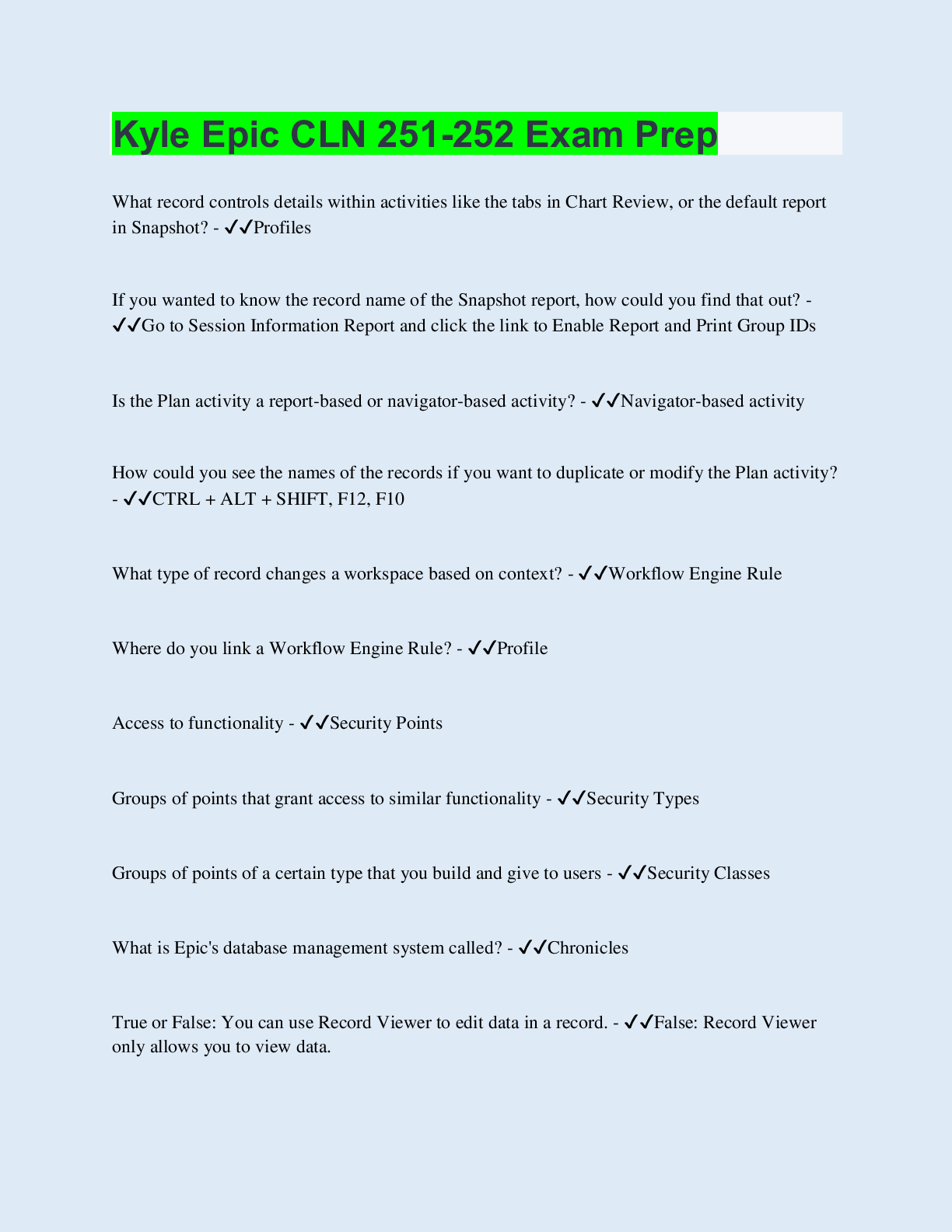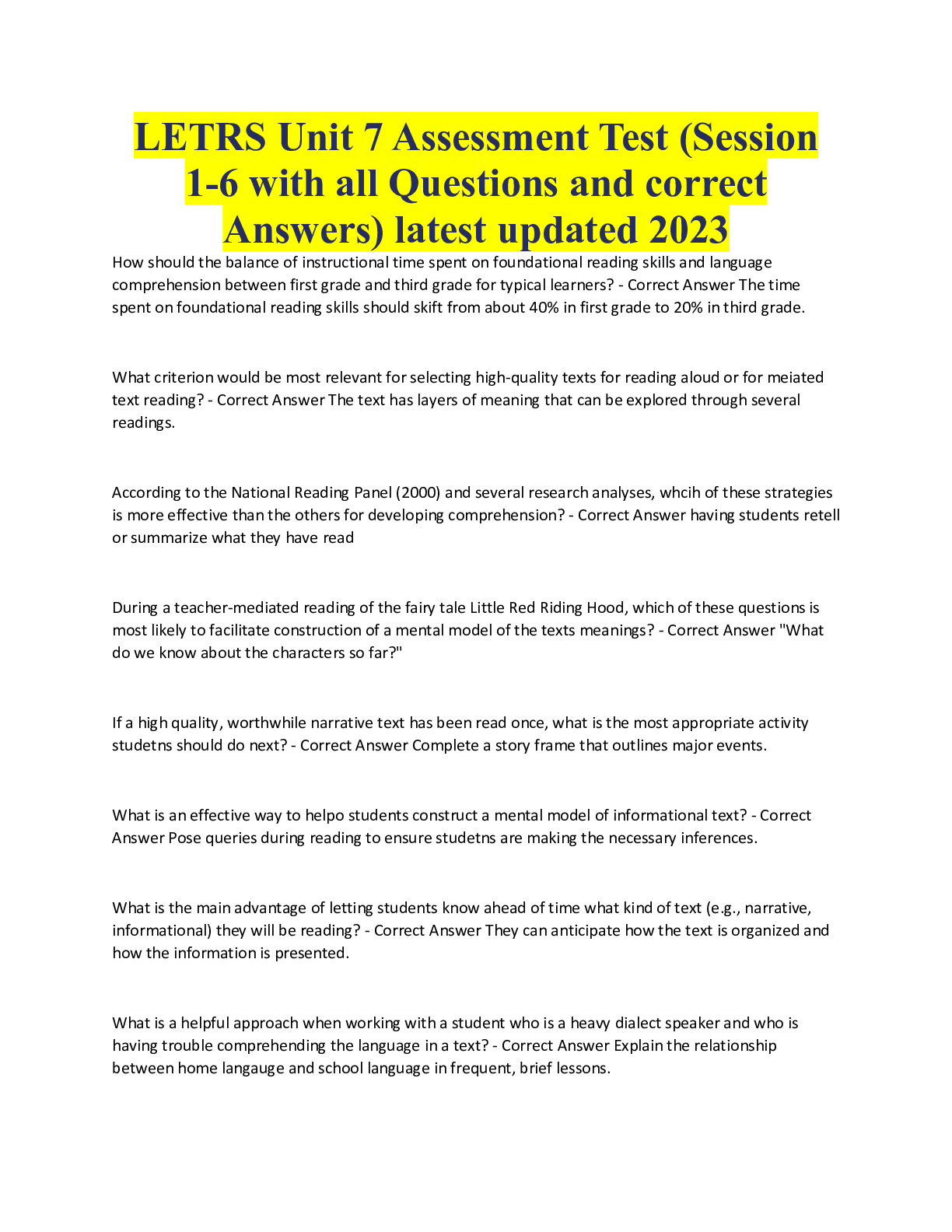ISR CDP - Module 2 Questions and Answers
Document Content and Description Below
The ___ addresses the tasks that as a nation, are necessary to provide enduring security for the American people and shape the global environment. The end goals/objectives. - ANSWER NSS The ___ out... lines the DOD's approach to implementing the presidents NSS. The ways the goals/objectives will be met. - ANSWER NDS The ___ supports the aims of the NSS and implements the NDS. The means of meeting the goals/objectives. - ANSWER NMS The ____ outlines the environment, objectives, approaches and challenges in the Space domain with a specific focus on National Security. - ANSWER NSSP The _______ _-_ essentially combines the guidance in the NDS, NMS, NIPF, and NIS with the vision from the USAF SMP and AF FOC all into one document to give specific instructions on how the USAF conducts ISR operations. - ANSWER AFGIISR 2-0 The ____ directly funds everything from USAF manning, to programs, to systems for the current fiscal year and sets the overall plan for future spending. - ANSWER NDAA The ___ sets forth national security priorities and provides the IC with the mission directions of the Director of National Intelligence - ANSWER NIS The ____ is the primary mechanism to establish, manage, and communicate national intelligence priorities. - ANSWER NIPF The ____ is the most strategic document that directs the IC on who is in charge and how the IC needs to operate in order to meet the customer needs and maintain security. - ANSWER NIPF _____: The Air Forces overarching force development concept - ANSWER AFFOC USAF ___: translates the USAF 30-year strategy, America's goals and objectives - ANSWER SMP These two documents are complimentary: ___, _____ - ANSWER SMP, AFFOC This document has five strategic vectors: 1. Provide Effective 21st-Century Deterrence, 2. Maintain a Robust and Flexible Global Intelligence Surveillance and Reconnaissance (ISR) Capability, 3. Ensure a Full-Spectrum Capable, High-End Focused Force, 4. Pursue a Multi-Domain Approach to our Five Core Missions, 5. Continue the Pursuit of Game-Changing Technology. - ANSWER SMP A unified combatant command is a command with a __________ continuing mission under a ________ commander. - ANSWER broad, single The operational chain of command runs from the President, to the _________ __ _______, to the Combatant Commanders - ANSWER Secretary of Defense As an ISR Airman, your mission will ultimately be directed by the ____'s - ANSWER CCMD o U.S. Africa Command o U.S. Central Command o U.S. European Command o U.S. Northern Command o U.S. Indo-Pacific Command o U.S. Southern Command are all __________ combatant commands - ANSWER geographic o U.S. Cyber Command o U.S. Special Operations Command o U.S. Strategic Command o U.S. Transportation Command are all __________ combatant commands - ANSWER functional USAF is currently organized into __ MAJCOMs - ANSWER 10 o Air Combatant Command o Air Force Reserve Command o Air Force Central Command o Air Education and Training Command o Air Force Space Command o Pacific Air Forces o Air Force Global Strike Command o Air Force Special Operations Command o United States Air Forces in Europe- Air Forces Africa o Air Mobility Command o Air Force Material Command are all _____ commands - ANSWER major ___ _____: primarily composed of uniformed U.S. Air Force officials who assist the CSAF in carrying out his role as the principal military advisor to the SECAF - ANSWER Air Staff The Air Force Chief of Staff has a dual hatted role as the principal military advisor to the Secretary of the Air Force and as a member of the ___ - ANSWER JCS _____ _____: composed of personnel from each of the five armed services that assists the CJCS and Vice-CJCS in discharging their responsibilities and is managed by the Director of the Joint Staff - ANSWER joint staff Manpower, personnel & services - ANSWER A1 Intelligence, Surveillance, and Reconnaissance - ANSWER A2 Operations - ANSWER A3 Logistics, Engineering, & Force Protection - ANSWER A4 Strategic Plans, Programs, & Requirements - ANSWER A5/8 Studies, Analyses, Assessments, & Lessons Learned - ANSWER A9 Deterrence & Nuclear Integration - ANSWER A10 ________ ___ _____ (NAF) - Echelon that resides directly under a MAJCOM - ANSWER Numbered Air Force The Director of ________ ____________ serves as the head of the U.S. Intelligence Community, overseeing and directing the implementation of the National Intelligence Program - ANSWER National Intelligence Operate, evaluate, and manage airborne Signals Intelligence - ANSWER 1A8X1 Acts as the principal advisor to the president, the National Security Council, and the Homeland Security Council - ANSWER DNI Fly as primary aircrew onboard a wide variety of aircraft to operate, evaluate, and manage airborne ISR information - ANSWER 1A8X2 Prepare, maintain, and present intelligence displays, reports, and briefings - ANSWER 1N0X1 Exploit and analyze multisensory imagery in conjunction with all-source intelligence information - ANSWER 1N1X1 Support SIGINT activities and operations by monitoring and collecting non-communications electronic signals transmissions - ANSWER 1N2X1A Perform communications SIGINT analysis to include acquiring signals through optimum antenna manipulation and receiver tuning - ANSWER 1N2X1C Operate and manage communications equipment, translate spoken or written foreign language material - ANSWER 1N3X1 collect, identify, and exploit appropriate communications to ensure accurate targeting - ANSWER 1N4X1A Perform detailed analysis on target network communications for additional exploitation - ANSWER 1N4X1B Collect and report intelligence information obtained from human sources in response to requirements, assess, debrief, and interrogate sources - ANSWER 1N7X1 Determine the specific aircraft ammunition, and anticipate the effect of the weapons to minimize the collateral damage - ANSWER 1N8X1 Science based ISR career path that operates in the surveillance realm for treaty verification - ANSWER 9S100 ______: Delivers intelligence-related advanced skills training and other specialized capabilities in support of Army, Joint, and Coalition commands and the U.S. IC - ANSWER INSCOM ___: Providing overall direction for and coordination of the collection of national intelligence outside the U.S. - ANSWER CIA ___: Provides military intelligence to warfighters, defense policymakers and force planners in the DoD and the IC in support of U.S. military planning - ANSWER DIA ___: Advances national security and protects financial integrity by informing Treasury decision with timely, relevant, and accurate intel and analysis - ANSWER DOT ___: Helps initiate new investigations of major drug organizations, strengthens ongoing investigations and subsequent prosecutions. - ANSWER DEA ___: Threat-focused national security organization with both intel and law enforcement responsibilities - ANSWER FBI The ___ is the U.S. Government agency in charge of designing, building, launching and maintaining America's intelligence satellites. - ANSWER NRO Planning is the deliberate process of balancing _____, _____, ____ to achieve directed objective and attain desired end states. - ANSWER risks, means, ways The two main types of plans are ________ plans & ___________ plans - ANSWER campaign, contingency Level 1 Contingency Plan - ANSWER commander's estimate Level 2 Contingency Plan - ANSWER base plan Level 3 Contingency Plan - ANSWER CONPLAN Level 4 Contingency Plan - ANSWER OPLAN What type of plans implement the military portion of national policy and defense strategy by identifying those actions the CCMDs will conduct on a daily basis? - ANSWER campaign ___________ plans identify how the command might respond in the event of a crisis of the inability to achieve objectives. - ANSWER contingency The _____ identifies forces and supplies required and provides a schedule for moving resources. - ANSWER OPLAN _____ is a continuous process that intelligence professionals use to manage the analysis and development of products that help the commander understand complex operating environments - ANSWER JIPOE Step 1 of JIPOE: define the ___________ environment - ANSWER operational Step 2 of JIPOE: describe the ______ of the operational environment - ANSWER impact Step 3 of JIPOE: evaluate the _________ and other relevant factors - ANSWER adversary Step 4 of JIPOE: determine adversary and other relevent actors' _______ __ ______ - ANSWER courses of action 3 LEVELS OF WARFARE: ________ - Analysis of the Operational Environment is focused on adversary forces and othadversary land, air, maritime, space, and other forces as well as other relevant aspects of the OE that could pose a direct threat to the security of the friendly force or the success of its mission - ANSWER tactical 3 LEVELS OF WARFARE: ___________ - sociocultural factors, the location of adversary political and economic support structures, military support units, force generation capabilities, potential third-nation or third-party involvement, logistic and economic infrastructure, political treaties, press coverage, adversary information activities, and the potential to affect the information environment - ANSWER operational 3 LEVELS OF WARFARE: _________ - civil-military relations; national ideology, will, and morale; ability of the economy to sustain warfare; mobilization of the strategic reserve; and possible intervention by third-party countries - ANSWER strategic Marine Corps intelligence activities are oriented toward the ___________ and ________ level - ANSWER operational, tactical _________ ___________ - An entity considered for possible engagement or action to alter or neutralize the function it performs - ANSWER targeting description _________ _______ - Systematically analyzes and prioritizes targets and matches appropriate lethal and nonlethal actions - ANSWER targeting purpose JOINT TARGETING CYCLE: o 1. End state and commanders objectives o 2. Target Development and Prioritization o 3. ____________ ________ o 4. Commander's Decision and Force Assignment o 5. Mission Planning and Force Execution o 6. Assessment - ANSWER capabilities analysis JOINT TARGETING CYCLE: o 1. End state and commanders objectives o 2. Target ___________ ___ _______________ o 3. Capabilities Analysis o 4. Commander's Decision and Force Assignment o 5. Mission Planning and Force Execution o 6. Assessment - ANSWER development and prioritization JOINT TARGETING CYCLE: o 1. End state and commanders objectives o 2. Target Development and Prioritization o 3. Capabilities Analysis o 4. Commander's Decision and _____ __________ o 5. Mission Planning and Force Execution o 6. Assessment - ANSWER force assignment JOINT TARGETING CYCLE: o 1. End state and commanders objectives o 2. Target Development and Prioritization o 3. Capabilities Analysis o 4. Commander's Decision and Force Assignment o 5. _______ ________ and Force Execution o 6. Assessment - ANSWER mission planning JOINT TARGETING CYCLE: o 1. End state and commanders objectives o 2. Target Development and Prioritization o 3. Capabilities Analysis o 4. Commander's Decision and Force Assignment o 5. Mission Planning and Force Execution o 6. __________ - ANSWER assessment JOINT TARGETING CYCLE: [Show More]
Last updated: 2 years ago
Preview 1 out of 12 pages
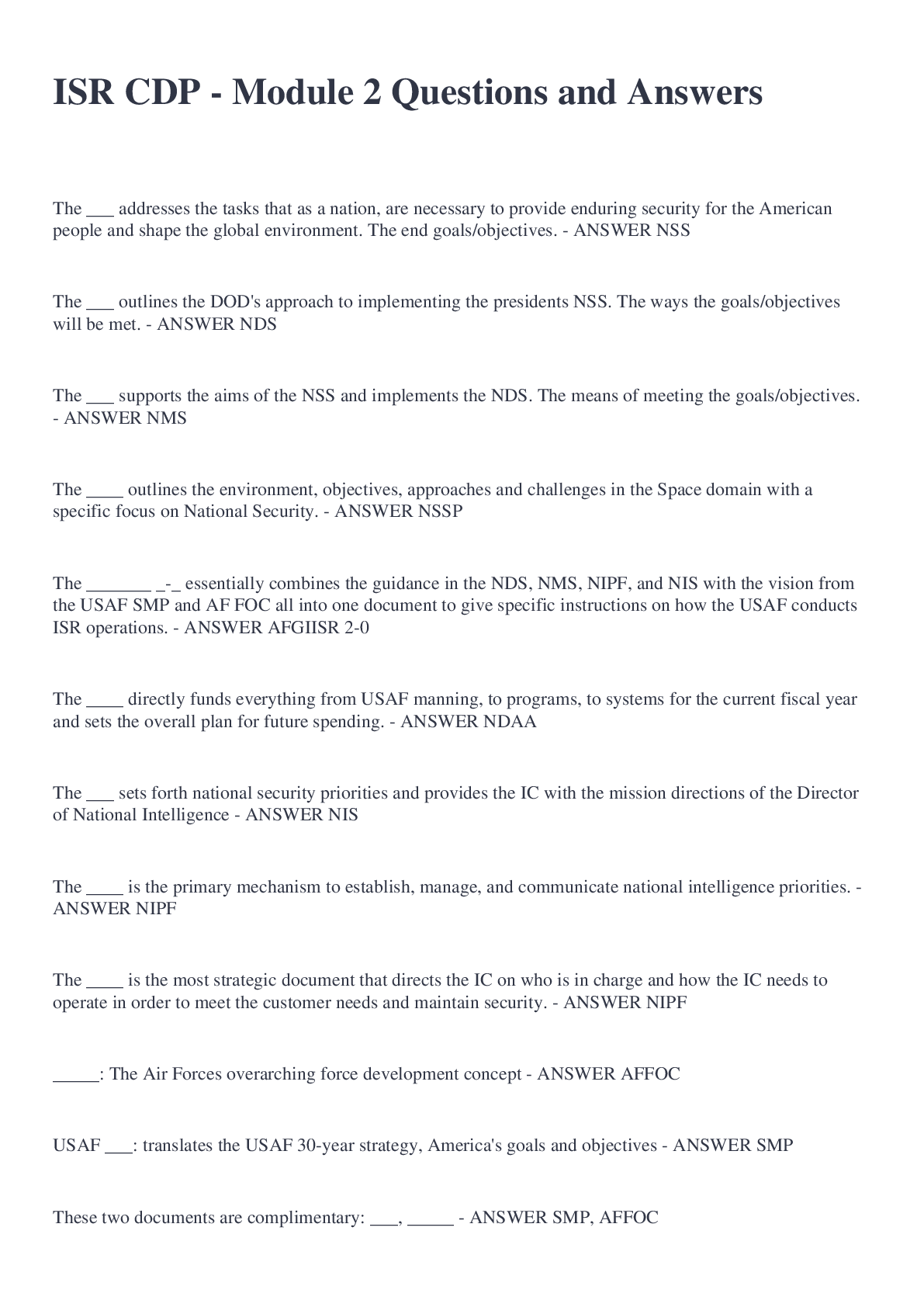
Buy this document to get the full access instantly
Instant Download Access after purchase
Buy NowInstant download
We Accept:

Reviews( 0 )
$8.00
Can't find what you want? Try our AI powered Search
Document information
Connected school, study & course
About the document
Uploaded On
Aug 14, 2022
Number of pages
12
Written in
Additional information
This document has been written for:
Uploaded
Aug 14, 2022
Downloads
0
Views
136


